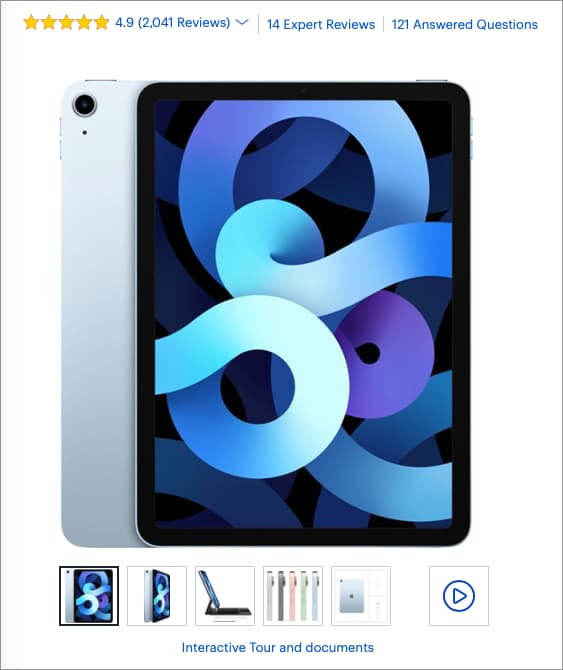
Shoppers tend to look for social proof to help guide their decision when they’re uncertain about making a purchase. You can alleviate some of the buyer’s concerns and often drive engagement by prominently displaying ratings, reviews, and other forms of social proof.
If you haven’t implemented a rating system yet, we recommend doing so. Once implemented, consider the following ideas and brainstorm ways of showcasing social proof for your products.
Leverage all social proof sources available to you
Think about showing ratings and reviews from both your customers as well as third-party sources that feature or rate your products. Typically, the more validation and context a buyer has, the more comfortable they’ll be to make a purchase.
Consider allowing your customers to provide:
- A rating value – Either a numerical value (e.g. 10/10) or a star-like value.
- Textual feedback – The added context can help some customers see if a product fits their specific needs or learn if there were any negative experiences.
- Product photos – Depending on what products you offer, user-generated product images can give buyers a different perspective or additional context that may not have been captured in your photos and description. Consider gating this behind confirmed purchasers of the product.
Consider pulling in third-party sources:
If your products are featured on reputable websites, you might think about showcasing these ratings/reviews. You can build trust and help reassure prospective buyers that they’re making the right decision by highlighting these reviews.
Experiment with different rating designs
Think about how you might make the ratings stand out so that your visitors’ eyes can find it at a glance.
- Size – Test larger font/shape sizes to avoid it getting lost against other elements.
- Color – Same color as your font vs. something with more contrast to make it pop.
- Shape – Instead of a star, try something unique to your site.
- Treatment – Consider testing drop shadows, outline color, background color, etc.
Examples:
If your site has a star rating system, test different colors, sizes, and shapes to generate contrast against the rest of your page. Below are just a few examples of how some sites vary their rating appearance:

Alternatively, you could try a different shape entirely. In a playful yet effective move, Newegg leveraged their name and logo (3 eggs) when they designed their rating icon. Instead of stars, they use little orange eggs:

Experiment with different rating positions
Test different areas of the page that might lend well to emphasizing and showcasing the rating. Keep in mind that the best position for the ratings may also change per page type (homepage vs. category page vs. product details page). Imagine where your customers’ eyes might gravitate to and decide if that’s a good area to include the product’s rating.
Some common areas include (left, right, above, or below):
- By the price
- By product name
- By product images
- By the Add To Cart button
Examples:
Dermalogica (PDP) – Between the product name and price

Best Buy (PDP) – Above the product images

Experiment with how you present customer reviews
You want the full reviews to be out of the way, yet not buried. The rating should be linked to the review so that even if it’s lower on the page, customers should be able to jump to the reviews.
Position — Consider where your reviews might most optimally fit on the page (may vary on mobile vs. desktop), such as:
- Integrated with product info group (e.g. within tabs or collapse sections)
- Below product info or below recommendations in either a carousel, grid, or list
Verified purchase — You might also show when a reviewer is a confirmed buyer of the product to add a layer of authenticity.
Examples of verified buyers:
Stacy Adams:

Amazon:

Consider leveraging third-party social proof content
Think about outside sources that you might be able to leverage that can help give your customers different insights and vantage points into some of your products. For instance, you might be able to highlight:
- Curated social media (e.g. content sourced from Instagram or Twitter)
- Reviews from trusted sources (e.g. news articles or review websites)
- Customer ratings, reviews, or testimonials from trusted third-party sites
Examples:
LaserAway’s homepage includes a banner showcasing logos from reliable sources that featured positive reviews of their services. This can build trust and help reassure a prospective buyer.

Similarly, Secretlab’s homepage has a banner with review excerpts from trusted sources and one with customer ratings:


Talk to sales.
Start converting more leads today.

.webp)
.webp)
.webp)
